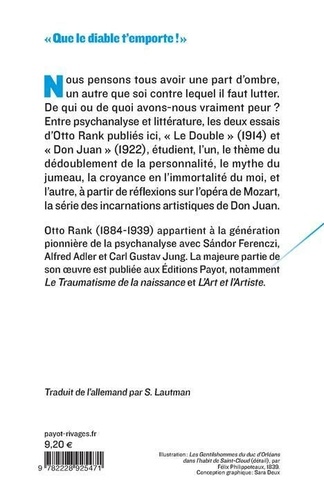

The comparative method of treatment, which we have to use in studying the genesis of the creative impulse, may at the same time be used to clear up satisfactorily a number of contradictions, not intrinsically part of the problem of art itself, but brought into it from neighbouring spheres, and in the course of applying these to the understanding of art. Introduction £5 a great extent, help to overcome the contradictions arising from that dualism in the history of art-criticism. It seems to me, there fore, that my whole conception of man should not only lead to a better understanding of the dualist nature of art, but also, to xxxvii Now, my view of psychological problems in cluded from the first the knowledge and acknowledgment of a dualism inherent in the individual and not dependent on any external opposition for its existence. To me, however, the whole science of art seems to be permeated, as I have said before, with a far-reaching dualism, which not only comes out in differences of opinion among different scholars and the divergences of their schools, but reflects the dualism inherent in the problem of art itself.

But without the asset of the experience I had gained in winning through to an independent outlook, I should, as a layman in the domain of art, hardly have been entitled to com pete with the array of prominent specialists (above all, Ger man) who, during that period, raised modern art-history to a level never before thought of. For it was precisely in the period follow ing the turn of the century, during which I struggled through to my own world-outlook, that the branches of knowledge bearing particularly on the study of art made such enormous progress as to necessitate a re-orientation of the whole artproblem. INTRODUCTION SSS3 I f, on my returning after more than twenty-five years to my original artist-problem, I am able to put forward my con ception of artistic creativity in a comprehensive form, I owe it not merely to the course of my own development, but also to the advances that have been made in the most varied depart ments of knowledge. Spiral Ornaments of the Older and Younger Bronze Age

Symbolic Representation of Christ’s Resurrection through the Soul-Bird Charadrius Reliefs in the Graves of Petit Morin, Marne Separation of Heaven from Earth (Ancient Egypt)įlat Figure of an Ancestor, from New Guinea French West AfricaĪncestral Figures from New Guinea and N ew Zealand showing the Importance of the Head Graves and Houses of the Early Bronze-Age

So-called Hut-Urns from Phcsstos (Greece) The Templum of Troy, or the Navel of the World (2000 B.C.) Human Body divided according to the Signs of the Zodiac (from Danzel: Magic Anatomy Europe) 114 Egyptian Grave Stele, 3200 b. von den Steinen: Die Marquesaner und ihre Kunst, Berlin, 1931)


 0 kommentar(er)
0 kommentar(er)
